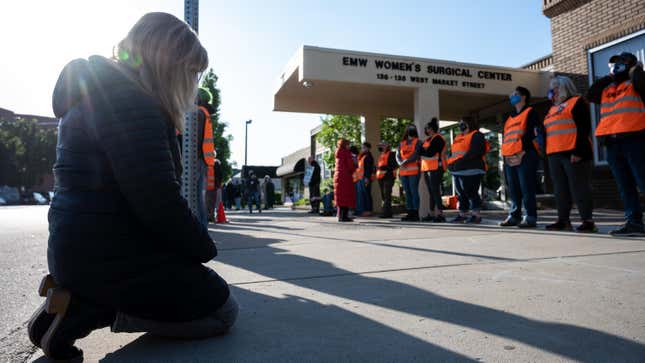10-Foot Buffer Zones Around Abortion Clinics ‘Likely Violate’ Free Speech Rights, Federal Court Rules
A Bush-appointed judge wrote that protective zones are unfair because they prevent protesters from engaging in “close, personal conversations" with patients.
AbortionPolitics

A federal appeals court ruled Wednesday that the ordinance mandating 10-foot buffer zones around Louisville, Ky., medical facilities to protect patients from protesters “likely violate the First Amendment” and is unenforceable—for now. The ordinance basically only applies to the only abortion clinic in Louisville, EMW Women’s Surgical Center.
The Louisville ordinance makes it illegal to linger or obstruct the buffer zone or stop someone from trying to enter or exit any medical facility. The case was brought by Sisters for Life and the Kentucky Right to Life Association, as well as two anti-abortion activists, before Roe v. Wade was overturned. (A note: As anti-trans protests have been on the rise across the country, I think it’s reasonable to assume any healthcare facility that provides trans healthcare in Louisville could eventually need such an ordinance.)
The opinion authored by 6th Circuit Court of Appeals Chief Judge Jeffrey S. Sutton says the ordinance, which passed in May 2021, creates a limitation on free speech because the city does not plan to enforce the ordinance against the clinic escorts that are helping patients into the facility. Sutton, who was first nominated to his lifetime seat by President George W. Bush, wrote that clinic escorts “discussed abortion-related topics in the buffer zone in non-neutral ways.”
-

-

-

-

-

-

-

-

-

-

-

-

-

-

-

-

-

-

-

-

-

-

-

-

-

-

-

-

-

-

-

-

-

-

-

-

-

-

-

-








































